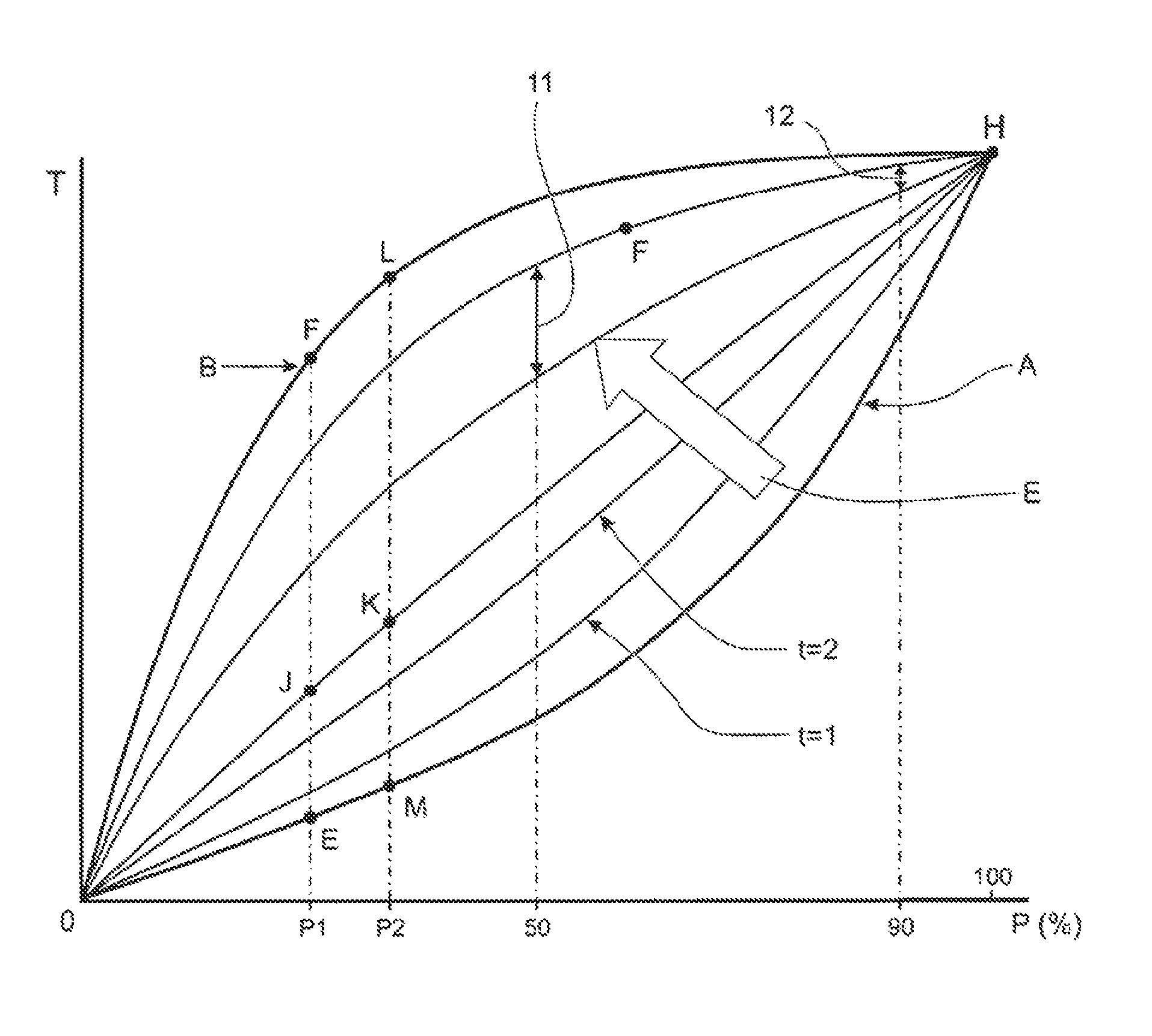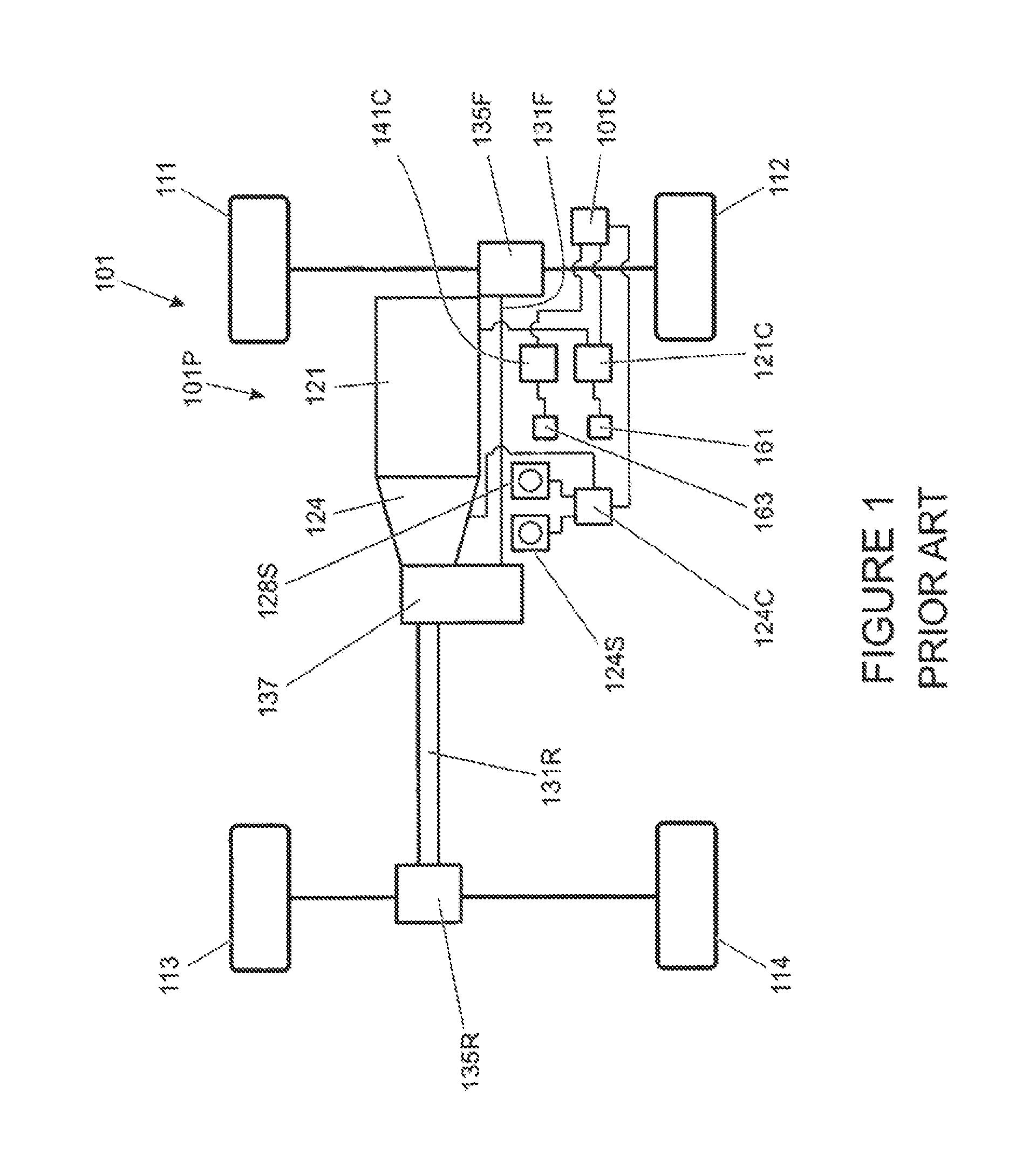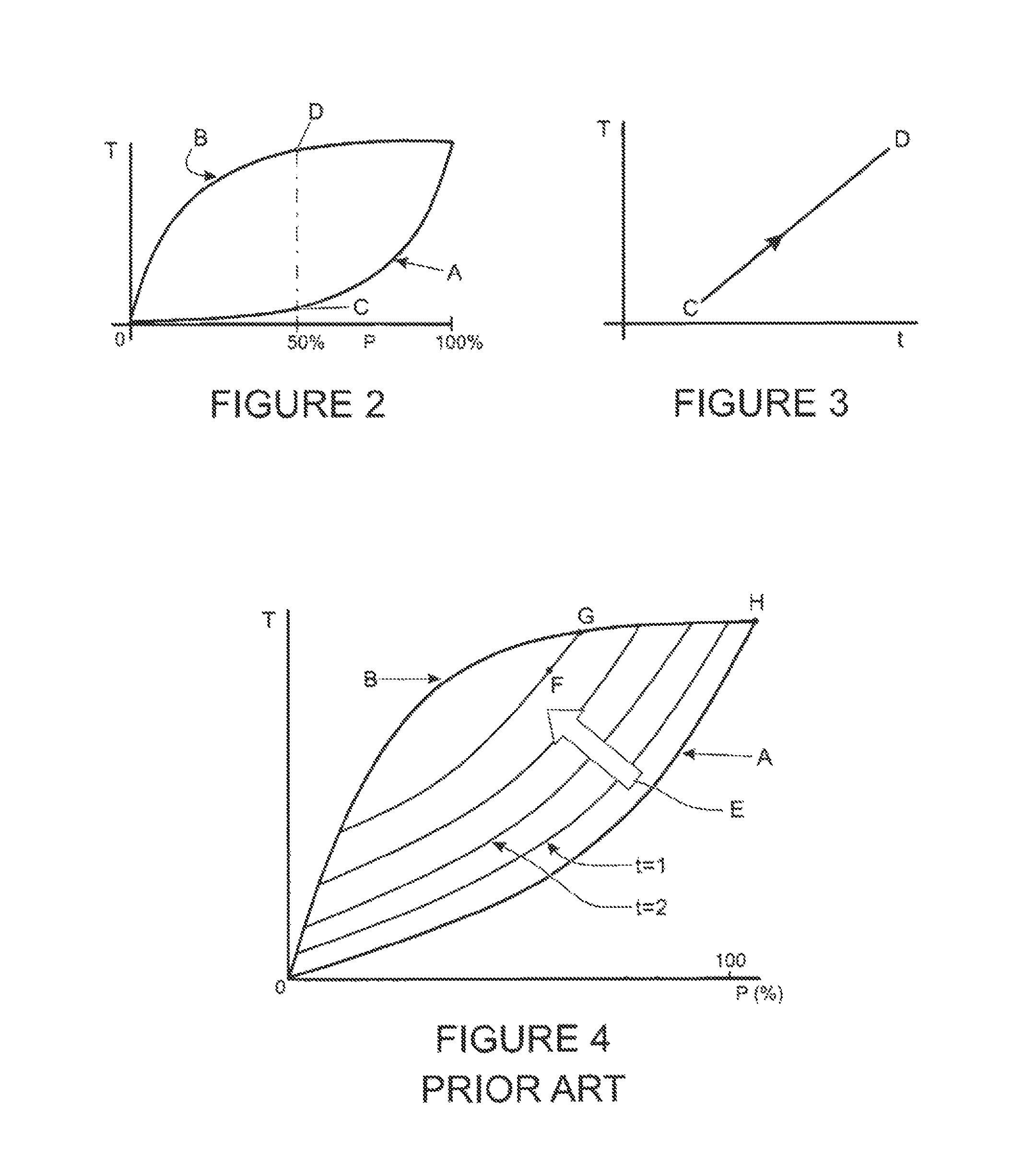Adaptive control of motor vehicle powertrain
a technology of motor vehicles and powertrains, applied in electrical control, mechanical equipment, driver input parameters, etc., can solve problems such as difficulties, unfavorable torque map change, and immediate change of engine output torque, and achieve the effect of completing relatively quickly
- Summary
- Abstract
- Description
- Claims
- Application Information
AI Technical Summary
Benefits of technology
Problems solved by technology
Method used
Image
Examples
Embodiment Construction
[0084]FIG. 5 is a schematic illustration of a motor vehicle 201 according to an embodiment of the present invention. Like features of the vehicle 201 of FIG. 5 to those of the vehicle 101 of FIG. 1 are shown with like reference numerals prefixed numeral 2 instead of numeral 1. Thus engine 121 of the vehicle 101 of FIG. 1 corresponds to engine 221 of the vehicle 221 of FIG. 5.
[0085]The vehicle 201 has a VCU 201 programmed with accelerator pedal progression maps that are used to determine engine torque T as a function of accelerator pedal position P.
[0086]FIG. 6 shows a plot of engine torque (T) against percentage of maximum accelerator position (P). A cautious characteristic is marked A, and an aggressive characteristic is marked B.
[0087]In the event of a change of vehicle operating mode whereby for example the cautious characteristic is blended to the aggressive characteristic, blending is in the direction of arrow E, and the progress of the blend is indicated at time t=1, t=2 etc.
[...
PUM
 Login to View More
Login to View More Abstract
Description
Claims
Application Information
 Login to View More
Login to View More - R&D
- Intellectual Property
- Life Sciences
- Materials
- Tech Scout
- Unparalleled Data Quality
- Higher Quality Content
- 60% Fewer Hallucinations
Browse by: Latest US Patents, China's latest patents, Technical Efficacy Thesaurus, Application Domain, Technology Topic, Popular Technical Reports.
© 2025 PatSnap. All rights reserved.Legal|Privacy policy|Modern Slavery Act Transparency Statement|Sitemap|About US| Contact US: help@patsnap.com



